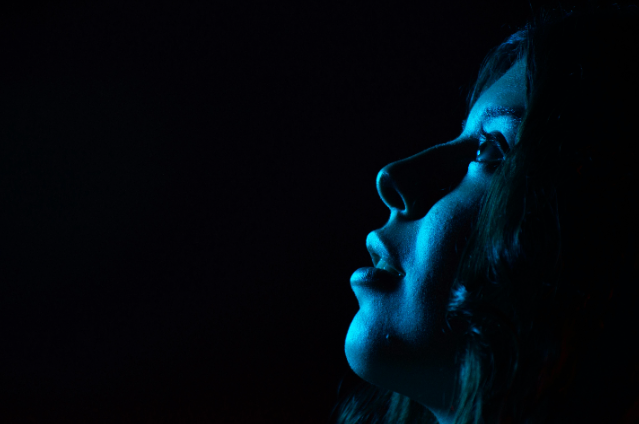
Screens have become unavoidable in today’s digital age. Most people spend hours each day staring at these glowing devices like smartphones, laptops, televisions and tablets. These gadgets have transformed communication and learning and they also expose us to something hidden yet powerful which is blue light.
A type of high energy visible (HEV) light that plays a complex role in our health is known as blue light. On one hand, it helps us regulate our sleep cycle and keeps us alert during the day. On the other hand, excessive exposure to it, especially from screens at night disrupts our patterns of the sleep, strains our eyesight and may even accelerate long term eye damage. How blue light works and how to manage it, is essential for students, professionals and anyone living in the digital era to understand.
What is Blue Light?
Visible light is made up of different wavelengths like ranging from long, low energy red light to short, high-energy blue light. Blue light sits at the high energy end of the spectrum, just next to ultraviolet (UV) rays.
Sources of blue light include, Natural sunlight which is our biggest and healthiest source. Artificial lighting such as LED bulbs. Digital screens like smartphones, laptops, tablets and TVs.
While sunlight exposure to blue light is natural and beneficial for us but the problem arises with the constant artificial exposure we face from the screens, often late into the night.
Blue Light and the Sleep Cycle
Our bodies follow a natural rhythm called the circadian rhythm. Where theres an internal 24 hour clock that regulates when we feel awake and when we feel sleepy. Blue light plays a vital role in this rhythm. It affects melatonin, which is the hormone that signals to our body that it’s time to sleep.
Blue light exposure from the sun suppresses the melatonin, which keeps us alert and energetic during the daytime.
At night, however, if we continued screen time, it tricks the brain into thinking that it’s still daytime, which delays the melatonin release.
This results in difficulty in falling asleep, poor quality sleep, reduced alertness in the next morning.
For students, this becomes a vicious cycle of late night studying or scrolling which disrupts sleep, reduces memory and the focus of the next day. And it leads us further to procrastination and fatigue.
Effects on Eyesight
Beyond sleep disruption, blue light also impacts our eye health, as it gives us digital eye Strain. Spending hours looking at screens forces the eyes to work hard to focus. Blue light scatters more than other wavelengths which creates glare that causes eye fatigue, headaches and blurred vision. This condition is now so common that it has a name: Computer Vision Syndrome (CVS). It also makes our Eyes Dry. Prolonged screen time reduces our blinking rate which causes dryness, irritation and discomfort in our eyes. Blue light glare worsens this condition. And Theres a High Risk of Retinal Damage. Although research is ongoing, but some studies suggest that long term blue light exposure may damage our retinal cells, potentially increases the risk of macular degeneration which is a leading cause of vision loss.
Benefits of Blue Light (When Used Correctly)
It’s important to know that blue light is not inherently “bad.” In fact, it also has benefits when consumed at the right time such as it boosts our alertness and mood during the day, it improves our memory and cognitive function, it also supports our natural circadian rhythms when exposure comes from sunlight.
The problem lies in excessive and artificial exposure, especially at night.
How to Protect Yourself from Blue Light?
We can protect ourselves from Blue light by following the 20-20-20 Rule which is, every 20 minutes, look at something 20 feet away for 20 seconds. This relaxes our eye muscles and reduces digital strain. Also, by limiting screen time before bed. Avoid screens at least one hour before sleep. If it's unavoidable, enable “night mode” or “blue light filter” settings available on most of our devices. And by Increasing Natural Light Exposure. We can try spending time outdoors during the day which strengthens our circadian rhythm and makes us less vulnerable to artificial blue light effects at night. Using Protective Glasses also help as blue light filtering glasses or screen protectors can reduce our strain, especially for people who work long hours on digital devices. By Blinking More and Staying Hydrated and consciously blinking and drinking plenty of water reduces dryness and irritation caused by screen time to us.
The Bigger Picture
The digital world is here to stay, and avoiding screens completely is unrealistic. However, understanding the science of blue light gives us power over its effects. For students, managing blue light means better sleep and stronger memory. For professionals, it means fewer headaches, less strain, and higher productivity.
Ultimately, the goal is balance: making use of blue light’s natural benefits during the day while protecting our eyes and sleep cycles from its harm at night. With simple lifestyle adjustments, the invisible rays from our screens no longer have to control our health and wellbeing.
Conclusion
Blue light is a double-edged sword. While it supports energy, alertness, and productivity in the right doses, uncontrolled exposure— particularly from screens— damages sleep quality and strains the eyes. In a time when digital use is unavoidable, the solution is not elimination but management. By setting boundaries, using protective habits, and prioritizing natural light, we can ensure that technology enhances our lives without stealing our rest or damaging our vision.
